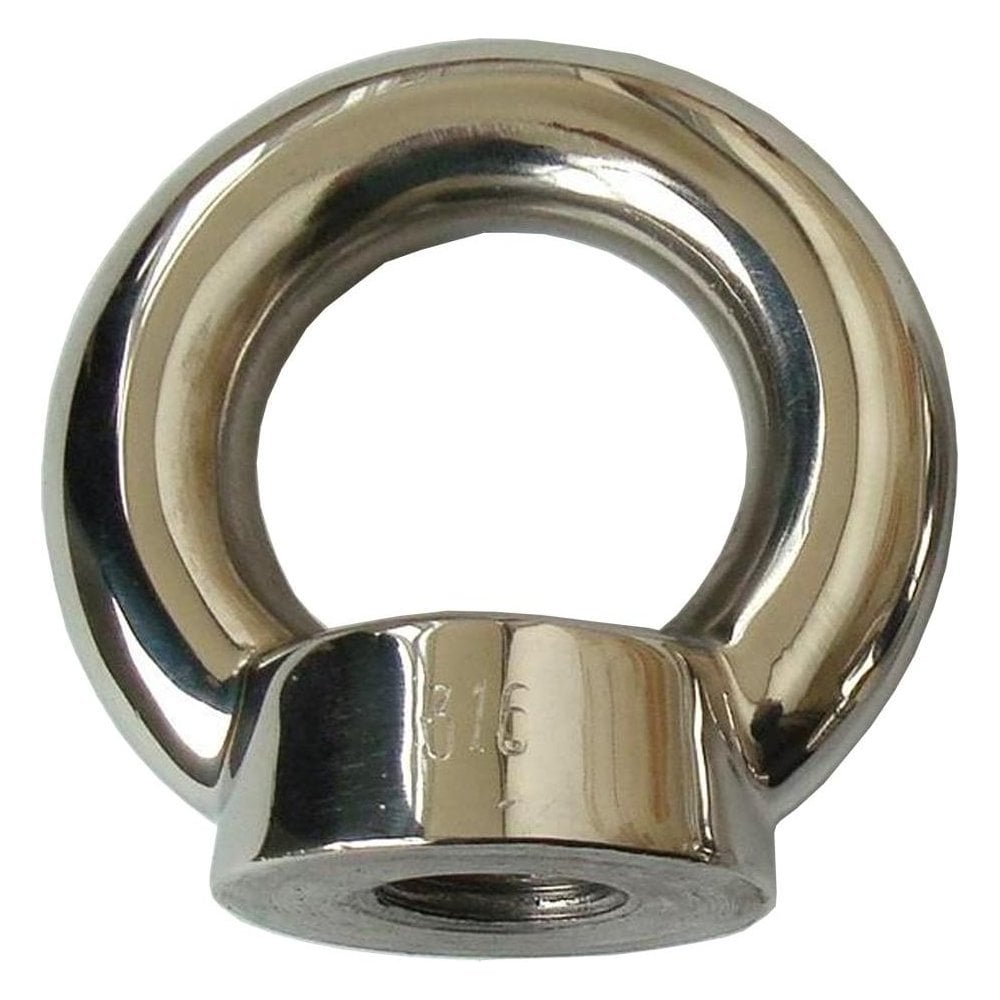
An eyenut is a type of fastener used to provide a secure point for attaching and supporting various components. It is an oval or circular structure with a threaded hole in the center. The hole allows for attachment of bolts of other threaded fasteners. An eyenut works with other hardware to create connections between conductors and poles. They mostly help to ensure the stability and integrity of the transmission line system. Connections with other components helps to distribute loads effectively. It also helps maintain the structural stability of the line. An eyenut is from materials like galvanized steel. These materials and coatings help them to withstand the various environments of South America. Examples of eyenut include regular eyenut, long shank eyenut, shoulder eyenut, forged and stainless steel eyenut. They find use in various applications such as renewable energy projects, urban infrastructure and seismic zone adaptation.
Key features of eyenut
Eyenut has features that contribute to their effectiveness and reliability in various applications. Assess the various features of the eyenut before selecting to ensure effectiveness. The following are the common features of the eyenut.
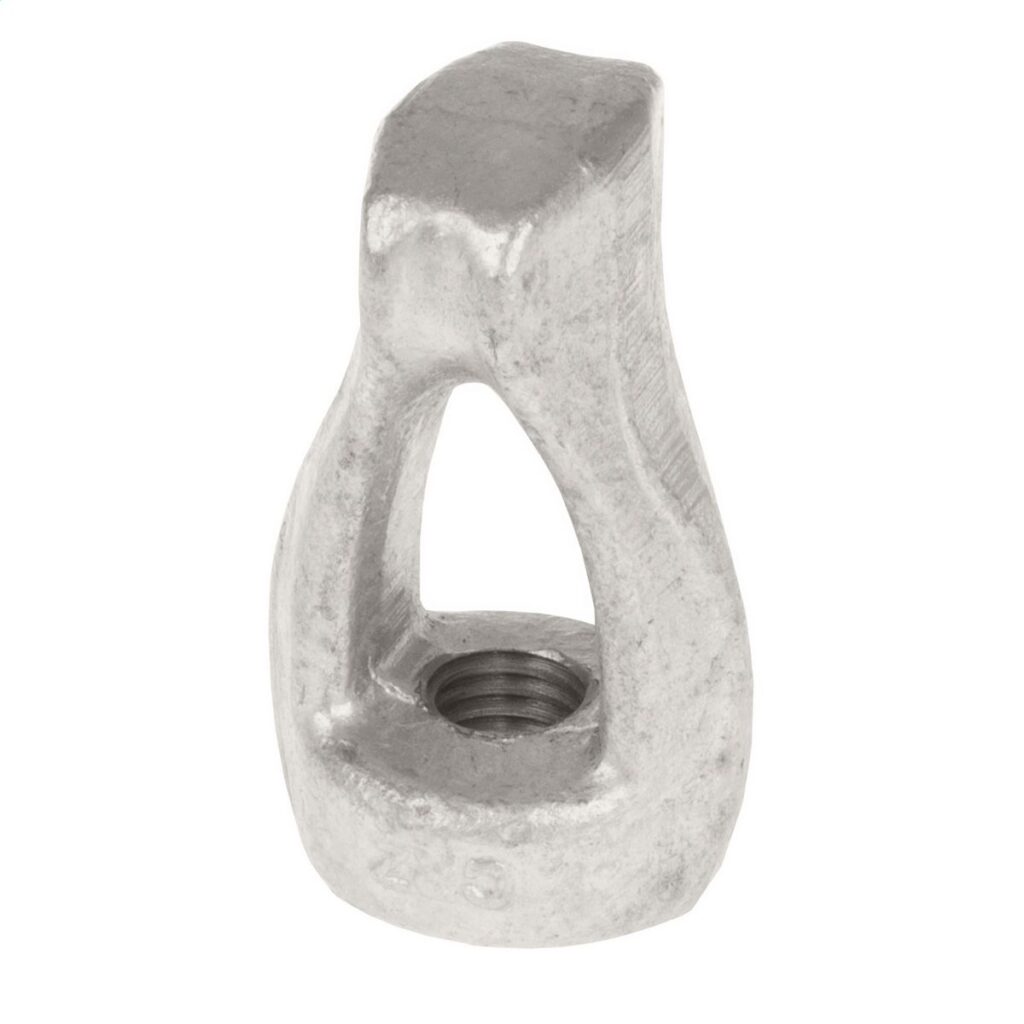
- Threaded hole – this is the hole in the center that allows the attachment of bolts or other threaded fasteners. This allows for secure connection of components to the eyenut. This also ensures the robust and dependable connection.
- Versatility – they come in various types and designs which allows hem to work in a wide range of applications. Versatility also allows them to adapt in different terrains and environmental conditions.
- Adaptability – adjustable eyenut provide flexibility in positioning components along their threaded shank.
- Load bearing capacity – eyenuts are able to bear the load of conductors, insulators and other overhead components.
- Corrosion resistance – eyenuts with corrosion resistant coatings are able to resist rust.
- Ease of installation – they also allow efficient and timely construction of transmission lines.
- Environmental factors – eyenuts are able to withstand various environmental factors in South America. This is including temperature variations, vibrations and exposure to the elements. This helps to enhance resistance and reliability in the various applications.
Selection and installation of eyenut
Selecting the right eyenut involves considering several factors to ensure performance and reliability. These factors include cost efficiency, installation and maintenance, durability, load requirements, environmental conditions and adaptability. The installation process of eyenuts requires precision and adherence to safety standards. Additionally, it is advisable to consult industry professionals for installation help. The following is a general installation process for eyenuts.

- Planning – conduct a survey of the transmission line route to identify the best locations for eyenut installation. Specify the spacing and positions of eyenuts. This is depending on the specific requirements and load bearing capacities.
- Preparation – clean and inspect the surfaces where the eyenuts will attach and ensure they are free from rust and debris. Ensure the support structures are in good conditions and capable of bearing the load.
- Hardware selection – gather all the necessary hardware and ensure they are in good condition. Select the type of eyenut based on load requirements and environmental conditions.
- Eyenut attachment – securely attach the eyenuts to the support structure. This is using the designated holes and fasteners. Ensure proper alignment and tightening of the eyenuts.
- Quality checks – perform quality checks to verify the correct installation of eyenuts. Look for signs of damage, corrosion or misalignment and address them.
- Installation of components – thread the necessary components through the eyenuts.
- Documentation – keep detailed documentation of the installation process. This is including the types and locations of eyenuts used.
Maintenance and inspection of eyenut
Proper maintenance and inspection of the eyenuts helps to ensure the reliability and longevity of the power infrastructure. It also helps to provide valuable guidance for maintaining the health of the eyenuts in overhead transmission lines. The diverse weather and environmental conditions of South America influence the frequency of the maintenance and inspection. The frequency is mainly annually or semi-annually. The following is a basic guide for maintenance and inspection of eyenuts in South America.
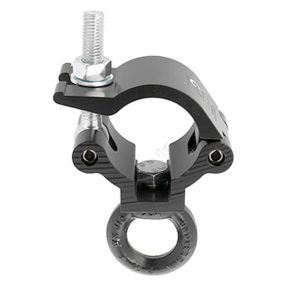
- Perform visual inspections of all eyenuts and look for signs of corrosion, damage or misalignment. Tighten any loose bolts or fasteners if necessary.
- Apply anti-corrosion coatings or replace any corroded eyenuts to prevent structural degradation.
- Assess the load bearing capacity of the eyenuts and ensure they can still support the weight of the components.
- Verify the eyenuts are suitable for the various environmental conditions. This isincluding resistance to high humidity or corrosive environments.
- Ensure the conductors are properly attached to the eyenuts and aligned to the specifications.
- Assess the effectiveness of the eyenuts vibration dampening features. Ensure proper functioning to mitigate oscillations.
- Monitor the impact of thermal stress on eyenuts and check for signs of deformation or fatigue caused by temperature changes.
- Lubricate the moving parts of the eyenuts to maintain smooth operation and reduce wear and tear.
- Maintain detailed records of the maintenance activities. This is including the dates of inspection and replacements of repairs.
Comparative analysis of eyenuts in South America
A comparative analysis of the eyenuts involves assessing and evaluating various factors. These factors influence the decision making for which type of eyenuts to use for particular applications. It includes assessing the various types, designs, brands, manufacturers and environmental conditions. Additionally, it is advisable to seek professional guidance when selecting the eyenuts. The following are the common factors to include in the comparative analysis for eyenuts.
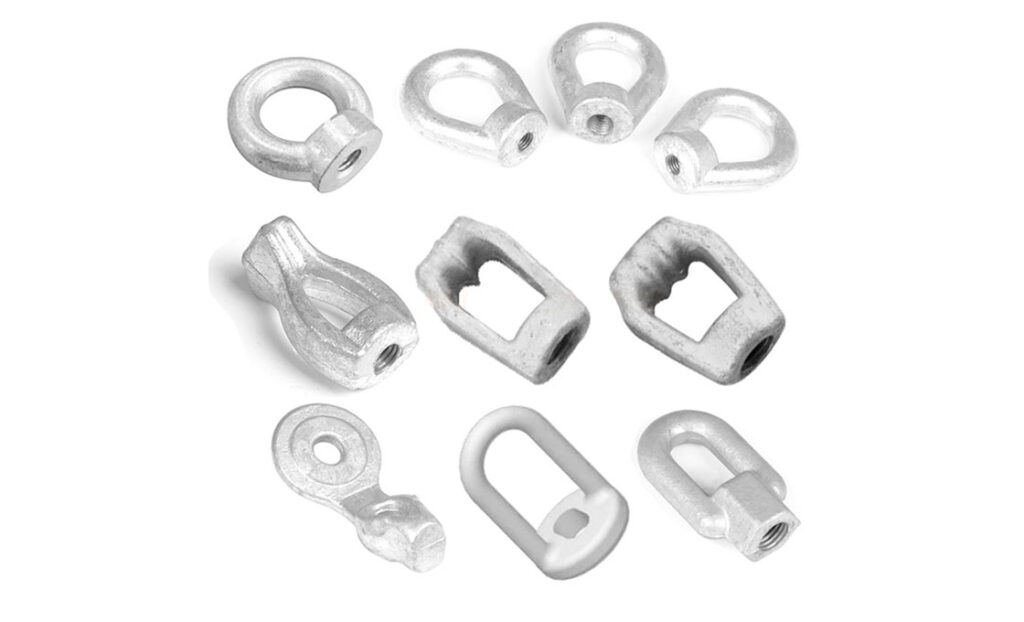
- Terrain-specific design – analyse eyenuts that cater for various terrains in south America. This including mountainous areas, urban landscapes and remote forests areas.
- Corrosion resistance – assess their ability to withstand the coastal regions.
- Cost efficiency – conduct a cost analysis of different eyenut types. Consider initial costs and long-term maintenance expenses.
- Renewable energy integration – evaluate the contribution of eyenuts to transmission lines.
- Environmental adaptability – evaluate how different types of eyenuts respond to the diverse climates.
- Load bearing capacities – compare the load bearing capacities of various eyenuts. This is to ensure their suitability for varying loads.
- Installation and maintenance ease – compare the ease of installation and maintenance of different eyenut types.
- Resistance to seismic activity – assess the resilience of eyenuts to seismic activity. This is especially in areas prone to earthquakes.
Certifications and standards of eyenuts
There are various standards and certifications that ensure the quality, reliability and safety of the eyenuts. Each south American country has their own set of standards regarding the use of electrical equipment. Some of the countries may adopt the international standards for the use of such equipment. Also, it is advisable to ensure the selected eyenuts comply with the regional standards and regulations. The following are the common certifications and standards in South America.
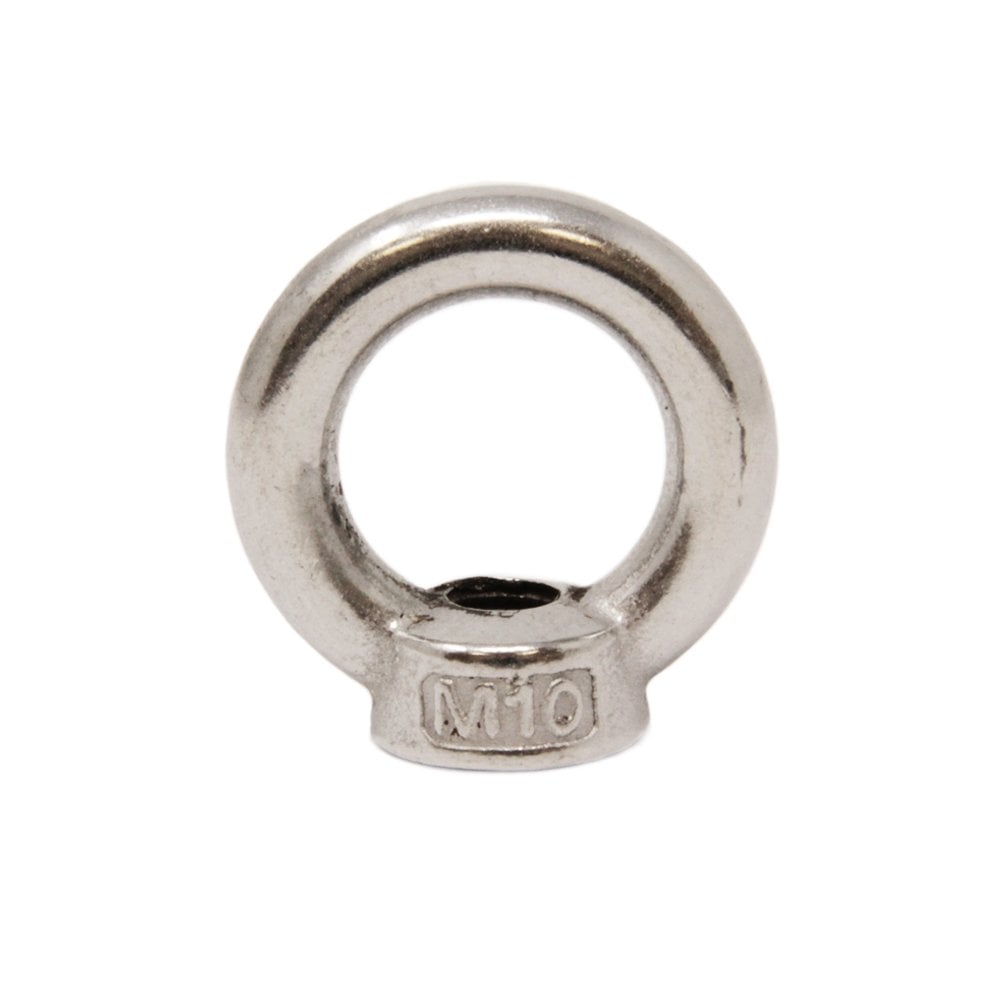
- ASTM international standards – these are standards set for materials, dimensions and designs of the eyenuts. They help to ensure the quality and compatibility with transmission line requirements.
- ISO certifications – this certification helps to demonstrate the commitment to quality production and environmental responsibility.
- Local electrical codes – these are regulations set for the use of eyenuts in the various countries in the region. Different countries have their own set of standards for use of eyenuts in the various infrastructure.
- IEC standards – these are international standards for safety and quality requirements for electrical equipment.
- OHSAS certification – this is for occupational health and safety of the workers especially in the manufacturing process.
Regional market for eyenuts in South America
There are various factors and market trends that influence the demand and supply of eyenuts in the market. These factors help stakeholders identify opportunities, challenges and specific requirements during selection. Additionally, manufacturers and suppliers should incorporate these insights to offer valuable guidance to those looking for eyenuts. The following are the factors that shape the regional market for eyenuts in South America.
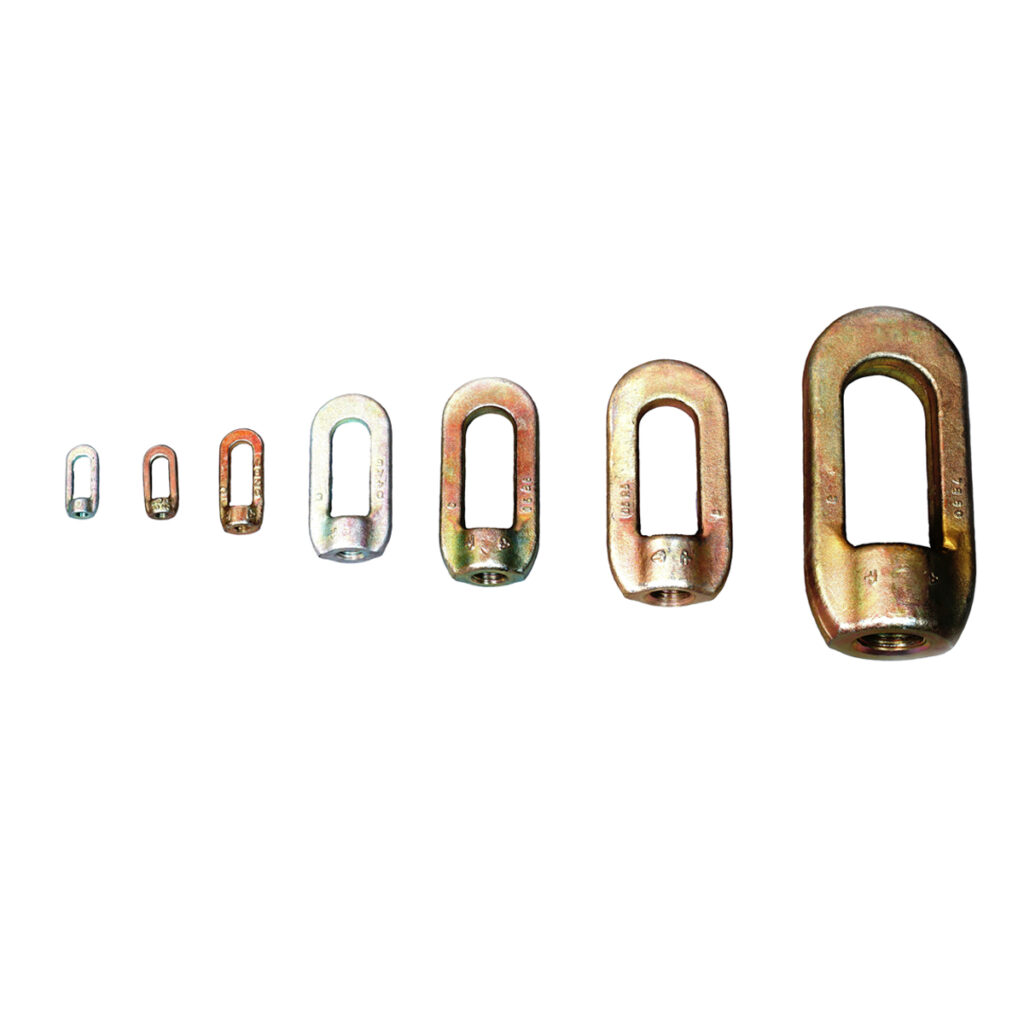
- Maintenance and replacement needs – availability of manufacturers help to ensure the consistent demand for eyenuts.
- Market competition and innovation – competition from manufacturers drives the innovation in eyenut design, materials and production methods.
- Investments – investing in transmission line upgrades contributes to the growth of the eyenut market.
- Infrastructure development – expansion and maintenance of power transmission networks drives the demand for reliable components like eyenuts.
- Diverse geographical terrain – the diverse landscapes in south America require the use of eyenuts that can withstand the environmental challenges. This requires the use of eyenuts that are corrosion resistant and with coatings and treatments.
- Trade relations – manufacturers exploring export opportunities may cater to markets beyond the continent.
Frequently asked questions
An eyenut is a type of fastener used to provide a secure point for attaching and supporting various components like conductors and insulators. It helps to ensure the stability and integrity of the entire transmission line system in South America.
Types of eyenuts include thimble eyenut, oval eyenut, clevis eyenut and angle thimble eyelet.
Regular visual inspection in south America could help in the maintenance of eyenuts. Check for signs of corrosion, rust, damage or deterioration. Replace any damaged or deformed eyenuts to ensure reliability.